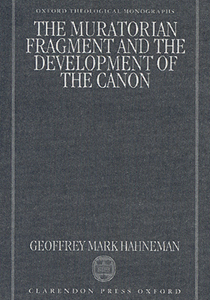Creating the New Testament

The Muratorian Fragment and the Development of the Canon
Geoffrey Mark Hahneman (Oxford: Clarendon, 1992), 237 pp., $49.95
The Muratorian Fragment is a short document—traditionally dated to the late second century and written in bad Latin—that addresses the question of whether certain writings should be considered Scripture. In other words, it defines what we call a New Testament canon. The fragment’s list is an interesting one: the four Gospels, Acts, thirteen Pauline letters, 1 and 2 John, Jude, Revelation, the Wisdom of Solomon and the Apocalypse of Peter.
In addition to listing works considered scriptural, the Muratorian fragment also mentions two other categories of early Christian texts. In the first category is a work that the fragment advises Christians to study privately but not to read publicly in church: the Shepherd of Hermas. The second category consists of works that should not be read at all: certain forgeries of Pauline letters and texts written by followers of Marcion and other “heretics.” The Muratorian Fragment makes no mention of Hebrews, James, 1 and 2 Peter and 3 John, although some of these may have been omitted accidentally and not deliberately.
Already a library member? Log in here.
Institution user? Log in with your IP address.

